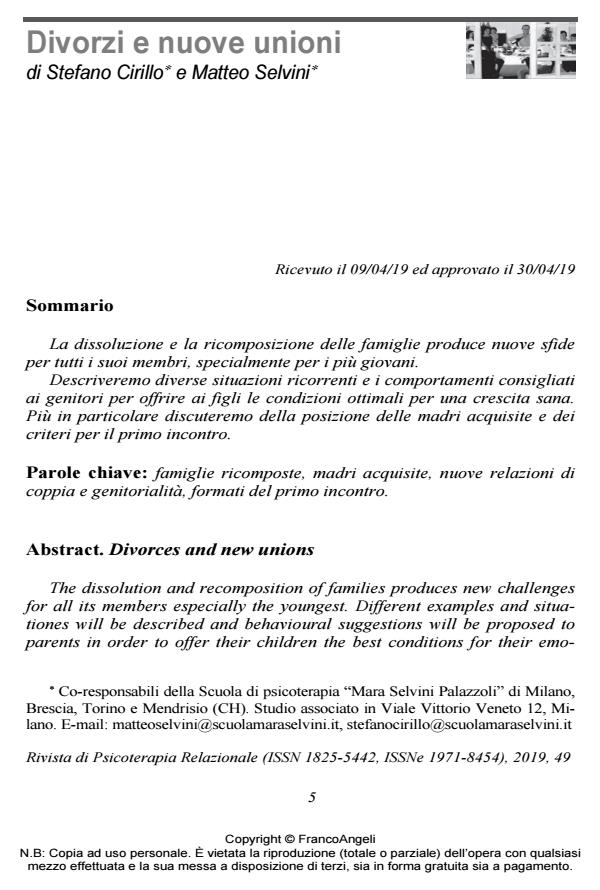Divorces and new unions
Journal title RIVISTA DI PSICOTERAPIA RELAZIONALE
Author/s Stefano Cirillo, Matteo Selvini
Publishing Year 2019 Issue 2019/49
Language Italian Pages 25 P. 5-29 File size 251 KB
DOI 10.3280/PR2019-049001
DOI is like a bar code for intellectual property: to have more infomation
click here
Below, you can see the article first page
If you want to buy this article in PDF format, you can do it, following the instructions to buy download credits

FrancoAngeli is member of Publishers International Linking Association, Inc (PILA), a not-for-profit association which run the CrossRef service enabling links to and from online scholarly content.
The dissolution and recomposition of families produces new chal-lenges for all its members especially the youngest. Different examples and situationes will be described and behavioural suggestions will be proposed to parents in order to offer their children the best conditions for their emotional and psychic development. In particular the position of mothers acquired and the criteria for first meeting setting are dis-cussed.
Keywords: Recomposed families, stepmothers, new couple relation-ship and parenthood, settings of the first meeting.
- Le sfide della psicoterapia di coppia e familiare alla luce delle nuove configurazioni di famiglie Carlo de la Ville sur Illon, Alba Saddi, in RIVISTA DI PSICOTERAPIA RELAZIONALE 61/2025 pp.27
DOI: 10.3280/PR2025-061002
Stefano Cirillo, Matteo Selvini, Divorzi e nuove unioni in "RIVISTA DI PSICOTERAPIA RELAZIONALE " 49/2019, pp 5-29, DOI: 10.3280/PR2019-049001